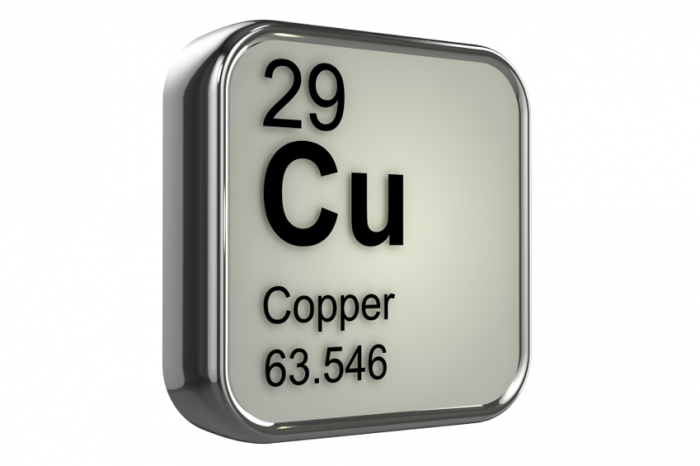Copper is an essential trace mineral necessary for survival. Most of the copper in the body is found in the liver, brain, heart, kidneys and skeletal muscle. Copper helps with the formation of collagen, increases the absorption of iron and plays a role in energy production.
This article provides an in-depth look at recommended intake of copper, its possible health benefits, foods high in copper and any potential health risks of consuming copper.
Recommended intake
The Recommended Daily Allowance (RDA) for copper is 900 micrograms per day for adolescents and adults. Copper deficiency is rare, and often caused by genetic defects of copper metabolism or over-dosage of zinc or vitamin C supplements.

Copper is an essential trace mineral and is found in the liver, brain, heart, kidneys and skeletal muscle.
Copper deficiency has also been seen in infants fed cow's milk instead of formula due to the low copper content of cow's milk.
Since copper is stored in the liver, deficiencies are developed slowly and over time.
Possible health benefits of consuming copper
Copper deficiency can cause an increased risk of infection, osteoporosis, impaired neurological function and compromised growth. Other physical side effects like hair and skin depigmentation may develop as well.
Immune function
Inadequate copper intake can lead to neutropenia, a deficiency of white blood cells (also called neutrophils). The main function of neutrophils in the body is to fight off infection. The fewer neutrophils you have, the more susceptible you are to infectious diseases.2
Osteoporosis
Severe copper deficiencies are associated with lower bone mineral density and risk of osteoporosis in the elderly. More research is needed concerning the effects of marginal copper deficiency and if copper supplementation can decrease age-related osteoporosis.2
Copper also plays an important role in the maintenance of collagen and elastin, major structural components of our bodies. Without enough copper, bodily tissues will begin to break down.
Foods sources of copper
Copper is found in a wide variety of foods. Some of the best sources of copper are organ meats, shellfish, nuts, legumes and chocolate. Copper is also added to some breakfast cereals and other fortified foods.

Beef liver is a good source of copper - 3 oz of beef liver contains 12,400 micrograms.
Most fruits and vegetables are low in copper.
- Beef liver, 3 oz: 12,400 micrograms
- Oyster meat, 3 oz: 3,630 micrograms
- Crab meat, cooked, 3 oz: 1,005 micrograms
- Mushrooms, cooked, 1 cups: 790 micrograms
- Cashew nuts, raw, 1 oz: 622 micrograms
- Lentils, boiled, 1 cup: 497 micrograms
- Almonds, 1 oz: 292 micrograms
- Chocolate, semi-sweet, 1 oz: 198 micrograms.
Copper supplements are available, but it is best to obtain any vitamin or mineral through food. It is not the individual vitamin or mineral alone that make certain foods an important part of our diet, but the synergy of that foods nutrients working together.
It has been proven time and again that isolating certain nutrients in supplement form will not provide the same health benefits as consuming the nutrient from a whole food. First focus on obtaining your daily copper requirement from foods then use supplements as a backup.
High intakes of zinc (150 mg/day or above) and vitamin C (1,500 mg/day) have been shown to induce copper deficiency by binding with and overtaking intestinal cells needed to absorb copper.
Potential health risks of consuming copper
No adverse effects from food consumption of copper have been reported, however excess copper supplementation can cause liver cirrhosis and abnormalities in red blood cells. Increased serum copper levels have also been linked with a higher risk of cardiovascular disease.
It is the total diet or overall eating pattern that is most important in disease prevention and achieving good health. It is better to eat a diet with a variety than to concentrate on individual nutrients as the key to good health.
References:
1.
Mahan, L. Kathleen and
Escott-Stump, Sylvia. Krause’s Food & Nutrition Therapy, 12th edition,
Saunders Elsevier, St. Louis, MS, Copyright 2008.
2.
Copper, Linus Pauling Institute, Oregon State
University, last reviewed January 2014, accessed 15 January 2015.
No comments:
Post a Comment